The Honeywell Home TH6320WF2003 is a smart, Wi-Fi-enabled programmable thermostat designed for compatibility with heat pumps and conventional HVAC systems, offering up to 3H/2C for heat pumps and 2H/2C for conventional systems. It features advanced scheduling, geofencing, and integration with smart home systems like Alexa and Google Assistant, ensuring energy efficiency and convenience. This guide provides detailed installation, setup, and configuration instructions to help you maximize the thermostat’s performance and enjoy seamless smart home integration.
1.1 Overview of the TH6320WF2003 Thermostat
The Honeywell Home TH6320WF2003 is a Wi-Fi-enabled, programmable thermostat designed for compatibility with heat pumps and conventional HVAC systems. It supports up to 3H/2C for heat pumps and 2H/2C for conventional systems, offering flexible heating and cooling control. This thermostat features geofencing, smart scheduling, and integration with smart home systems like Alexa and Google Assistant. Its Wi-Fi connectivity allows remote access and energy-efficient management through the Resideo app. The TH6320WF2003 requires a C-wire for installation and utilizes the UWP mounting system for easy setup.
1.2 Importance of Proper Installation
Proper installation of the TH6320WF2003 thermostat is crucial for ensuring optimal performance, safety, and energy efficiency. Incorrect installation can lead to system malfunctions, safety hazards, or even void the warranty. A C-wire is required for this thermostat, and improper wiring can result in faulty operation. Following the manufacturer’s guidelines ensures compatibility with your HVAC system and enables all smart features, including geofencing and Wi-Fi connectivity. Correct installation also guarantees accurate temperature control, energy savings, and seamless integration with smart home systems like Alexa and Google Assistant. Always refer to the official manual for detailed instructions.
Pre-Installation Requirements
A C-wire is required for proper operation. Ensure compatibility with your HVAC system (2H/2C conventional or 3H/2C heat pump). Verify a 4-wire setup; use an adapter if needed.
2.1 Compatibility Check
The Honeywell TH6320WF2003 is compatible with heat pumps (up to 3H/2C) and conventional HVAC systems (2H/2C). Ensure your system matches these specifications. A C-wire is required for installation; if your system lacks one, use the THP9045A1098 adapter. This thermostat is also compatible with smart home systems like Alexa and Google Assistant, enhancing convenience. Verify compatibility before starting installation to avoid issues.
2.2 System Requirements
The Honeywell TH6320WF2003 requires a C-wire for proper operation. If your system lacks a C-wire, use the THP9045A1098 adapter. Ensure your HVAC system supports the thermostat’s capabilities, including up to 3H/2C for heat pumps and 2H/2C for conventional systems. Compatibility with smart home systems like Alexa and Google Assistant is also supported. Verify that your system meets these requirements before proceeding with installation to ensure optimal performance and functionality.
2.3 Tools and Materials Needed
To install the Honeywell TH6320WF2003 thermostat, you will need a few essential tools and materials. A screwdriver (both Phillips and flathead) is required for removing the old thermostat and mounting the new one. Additionally, a drill and wall anchors may be necessary if the mounting system doesn’t fit your existing setup. Ensure you have the UWP mounting system provided in the package. If your system lacks a C-wire, the THP9045A1098 adapter is required. Other materials include wire strippers for connecting wires and a level to ensure proper alignment. Having these tools ready will streamline the installation process.

Understanding the UWP Mounting System
The UWP Mounting System is a standard feature for all T series thermostats, ensuring a quick and secure installation. It is included in the TH6320WF2003 package and designed for ease of use. After mounting, remember to close the UWP door to complete the installation properly.
3.1 Components of the UWP System
The UWP Mounting System includes a mounting plate, thermostat unit, and decorative cover plate. The mounting plate attaches to the wall, securing the thermostat. The decorative cover plate enhances the appearance. Additional components like the J-box adapter ensure compatibility with standard electrical boxes. Screws and mounting hardware are provided for secure installation. The UWP system is designed for easy setup, ensuring a professional finish. After installation, the UWP door should be closed to complete the process. This system streamlines the installation, making it efficient and straightforward for professionals and DIYers alike.
3.2 Mounting System Compatibility
The UWP Mounting System is compatible with a wide range of HVAC systems, including heat pumps and conventional systems. It supports up to 3H/2C for heat pumps and 2H/2C for conventional systems. The system is designed to work with various wiring configurations, ensuring flexibility during installation. The included J-box adapter enhances compatibility with standard electrical boxes. This universal design allows the UWP system to integrate seamlessly with existing setups, making it suitable for both new installations and upgrades. Its compatibility ensures a secure and professional installation across different HVAC configurations.

Package Contents
- T6 PRO Wi-Fi Thermostat
- UWP Mounting System
- Honeywell Standard Installation Adapter (J-box adapter)
- Honeywell Decorative Cover Plate
4.1 Thermostat Unit
The Honeywell Home TH6320WF2003 thermostat unit is a sleek, modern device designed for smart home integration. It supports up to 3H/2C for heat pumps and 2H/2C for conventional systems, ensuring compatibility with various HVAC setups. The unit features a high-resolution display and intuitive controls for easy navigation. Wi-Fi connectivity enables remote access and smart features like geofencing. The thermostat is compatible with Alexa and Google Assistant, enhancing its smart home capabilities. A C-wire is required for installation, and the unit includes advanced programming options for energy efficiency. The TH6320WF2003 is part of the T6 Pro series, known for its reliability and user-friendly design.
4.2 Mounting Hardware
The TH6320WF2003 package includes the UWP (Universal Wall Plate) mounting system, designed for easy and secure installation. The UWP system ensures compatibility with various wall types and provides a clean, professional finish. It includes a mounting bracket, screws, and spacers to accommodate different wall configurations. The UWP door must be closed after installation to ensure proper thermostat operation. Additional hardware like the Honeywell Standard Installation Adapter (J-box adapter) and decorative cover plate are also provided for a seamless setup. The UWP system is compatible with the Honeywell Decorative Cover Plate for enhanced aesthetics.
4.3 Additional Accessories
The TH6320WF2003 package includes a Honeywell Decorative Cover Plate for enhanced aesthetics, ensuring a clean and professional appearance. A Honeywell Standard Installation Adapter (J-box adapter) is also provided to simplify installation on standard electrical boxes. For systems lacking a C-Wire, the optional THP9045A1098 C-Wire adapter is recommended to ensure proper functionality. These accessories are designed to streamline the installation process and provide a polished finish, making the thermostat integration seamless with any home decor. They complement the UWP mounting system, ensuring a secure and visually appealing setup.

Installation Steps
Prepare the site, mount the thermostat using the UWP system, connect the wiring carefully, and finalize the installation by closing the UWP door and setting up the device.
5.1 Preparing the Site
Before installation, ensure the area is safe and ready. Turn off power to the HVAC system at the circuit breaker. Remove the old thermostat and inspect the wires for damage or corrosion. Verify compatibility with the UWP mounting system and ensure the C-wire is present or adapt it if necessary. Clean the wall area where the thermostat will be mounted to ensure proper adhesion. Gather all tools and materials, including the UWP mounting hardware and decorative cover plate. This preparation ensures a smooth and efficient installation process.
5.2 Mounting the Thermostat
Mount the thermostat using the UWP mounting system. Attach the UWP base plate to the wall, ensuring it is level and secure. If necessary, use the J-box adapter for compatibility with standard electrical boxes. Gently snap the thermostat unit onto the UWP base plate until it clicks into place. Ensure the thermostat is firmly attached and the display is facing the correct direction. If using the decorative cover plate, install it after mounting the thermostat. This step ensures a secure and visually appealing installation. Always follow the manufacturer’s guidelines for proper alignment and mounting.
5.3 Wiring Connections
Connect the wires to the appropriate terminals on the thermostat. Ensure the C-wire is connected for power. For heat pumps, use the O/B terminal, and for auxiliary heat, connect to AUX or E. The R, W, Y, G, and C terminals are standard. If your system lacks a C-wire, use the THP9045A1098 adapter. Do not use the W terminal for heat pump applications. Secure all wires firmly and close the UWP door to protect the connections. Double-check all wiring to match your system type. Refer to the manual for specific configurations and safety guidelines to avoid malfunctions.
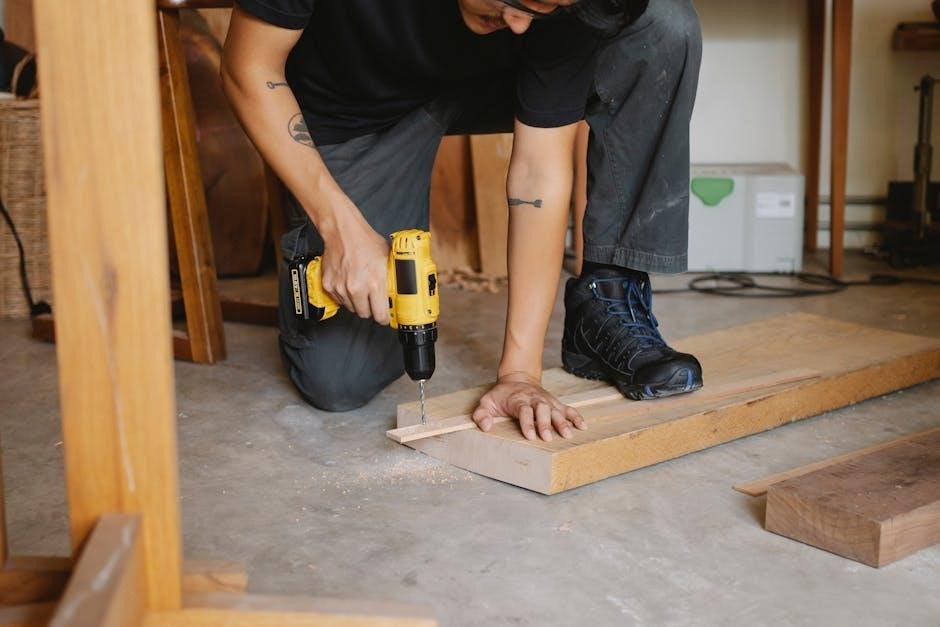
5.4 Finalizing the Installation
After completing the wiring, close the UWP door to secure the connections. Power on the thermostat and follow the on-screen prompts for initial setup. Use the Installer Set Up (ISU) options to configure system settings. Ensure Wi-Fi is connected for smart features. Test all functions, including heating, cooling, and ventilation. Verify the schedule and geofencing settings. Double-check all connections for accuracy. Refer to the manual for troubleshooting any issues. Once everything operates smoothly, the installation is complete, and the thermostat is ready for everyday use.
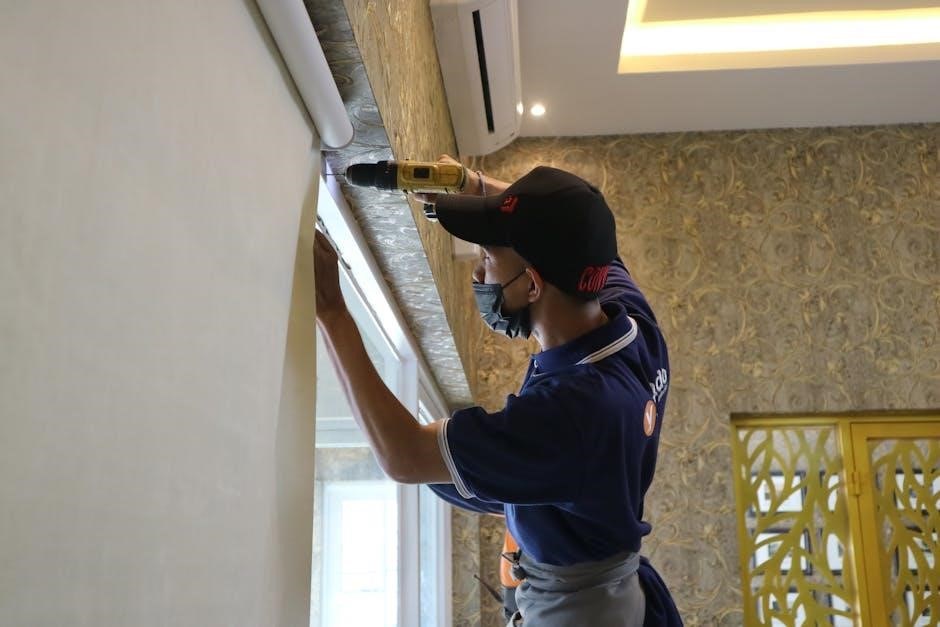
Initial Setup and Configuration
Power on the thermostat and follow on-screen instructions for initial setup. Configure basic settings, ensure functionality, test, and enable smart features for optimal performance.
6.1 Powering On the Thermostat
After installation, ensure the HVAC system is turned off at the circuit breaker. Verify the C-wire is connected or use the THP9045A1098 adapter if necessary. Power on the system and thermostat. The display should illuminate, indicating successful power-up. Check for any error messages and ensure basic functionality, such as temperature display and button responsiveness. If no issues arise, proceed to the setup process to configure settings and enable smart features.
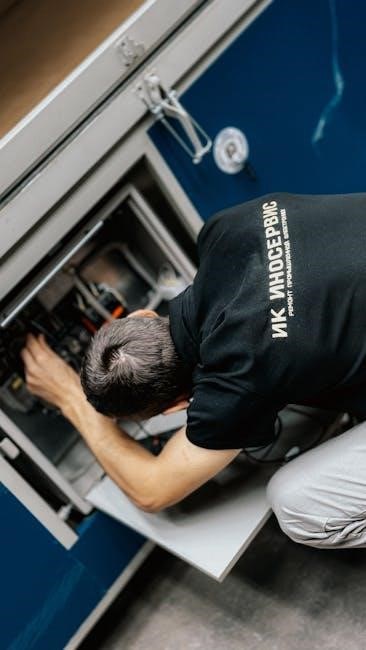
6.2 Setting Up the Device
Once powered on, the thermostat will guide you through initial setup. Select your system type (heat pump or conventional) and configure basic settings like time, date, and temperature units. Use the touchscreen interface to navigate through menus and confirm your preferences. Ensure the system type matches your HVAC setup for proper operation. After basic setup, proceed to configure advanced features such as geofencing and smart home integration through the Resideo app. This step ensures seamless functionality and remote control of your thermostat.
6.3 Configuring Wi-Fi and Smart Features
Connect the thermostat to your Wi-Fi network through the Resideo app. Open the app, select “Add Device,” and follow the prompts to link your thermostat. Ensure your router is nearby for a stable connection. Once connected, enable smart features like geofencing, which adjusts temperatures based on your location. Integrate with Alexa or Google Assistant for voice control. Customize settings in the app to optimize energy usage and comfort. Remote access allows you to monitor and adjust your thermostat from anywhere, ensuring efficient heating and cooling management.
Programming the Thermostat
Program the thermostat with scheduling options, geofencing, and smart features for energy efficiency and comfort. Customize settings via the Resideo app for optimal performance.
7.1 Scheduling Options
The Honeywell Home TH6320WF2003 offers flexible scheduling options, allowing users to create custom comfort schedules. Set up to 6 periods per day, adjusting temperature settings to match your lifestyle. Use the Resideo app or the thermostat interface to program schedules, ensuring energy efficiency and comfort. Geofencing integrates with your location, automatically adjusting temperatures when you leave or arrive home. Smart features learn your preferences over time, optimizing heating and cooling usage. This advanced scheduling ensures your home is always at the right temperature while saving energy and reducing utility bills.
7.2 Geofencing and Smart Features
The Honeywell Home TH6320WF2003 integrates geofencing, using your smartphone’s location to automatically adjust temperatures when you leave or arrive home. This feature optimizes energy usage and enhances comfort. Smart learning capabilities adapt to your preferences over time, ensuring efficient heating and cooling. Compatibility with Amazon Alexa and Google Assistant allows voice control and seamless integration into your smart home system. These advanced features work together to create a personalized and energy-efficient home comfort experience, reducing utility bills while maintaining optimal temperatures.
7.3 Advanced Programming Options
The Honeywell Home TH6320WF2003 offers advanced programming options, including custom scheduling and multi-stage heating and cooling control. Users can set up to 7-day schedules with precise temperature adjustments, optimizing energy usage. The thermostat also supports smart home integrations, enabling voice control through Amazon Alexa and Google Assistant. Advanced features like geofencing and smart learning adapt to your lifestyle, automatically adjusting settings based on your location and preferences. These options ensure maximum energy efficiency and comfort, allowing you to tailor your home’s climate to your unique needs.
Ventilation and Auxiliary Features
The TH6320WF2003 supports advanced ventilation settings and auxiliary heat configuration, enhancing energy efficiency and system performance. Auxiliary heat must be wired to AUX or E terminals for proper operation. Ventilation features may vary by model, ensuring optimal airflow and comfort in your home. These features work seamlessly with smart programming to maintain ideal conditions while minimizing energy use. Proper configuration is essential for reliable performance and system longevity. Always refer to the installation manual for specific wiring and setup instructions. Energy-saving modes and smart integrations further optimize ventilation and auxiliary functions.
8.1 Ventilation Settings
The TH6320WF2003 allows for advanced ventilation control, optimizing airflow and energy efficiency. Ventilation settings can be programmed to run continuously or intermittently, ensuring proper air circulation. The thermostat integrates seamlessly with ventilation systems, providing precise control over humidity and air quality. Smart features enable automatic adjustments based on outdoor conditions and occupancy. For optimal performance, ensure ventilation settings are configured according to your HVAC system’s specifications. Refer to the installation manual for detailed instructions on setting up ventilation modes and integrating with existing systems. Proper configuration ensures energy savings and maintains a comfortable indoor environment year-round.
8.2 Auxiliary Heat Configuration
The TH6320WF2003 supports auxiliary heat configuration for systems requiring additional heating sources. Ensure the auxiliary heat wire is connected to the correct terminal (AUX or E) to avoid system malfunctions. For heat pump applications, do not use the W terminal for auxiliary heat; it must be wired to AUX or E. Refer to the installation manual for specific wiring instructions. Proper configuration ensures efficient operation and prevents damage to the HVAC system. Always verify compatibility with your system type before enabling auxiliary heat settings. Consult the manual for detailed guidance on configuring auxiliary heat options safely and effectively.
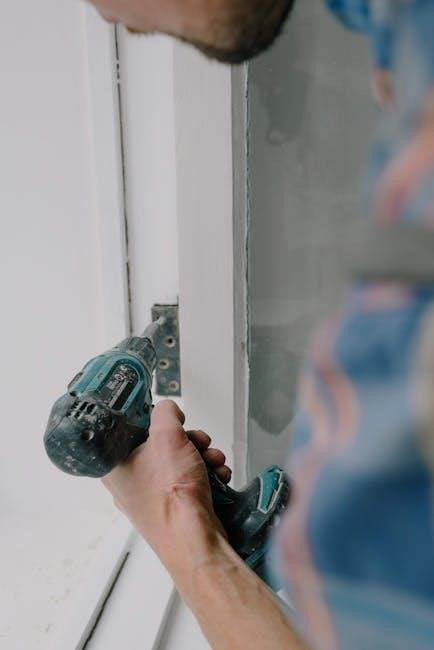
Safety Precautions
Always turn off power before installation. Ensure proper wiring to avoid damage or hazards. Follow manual instructions for safe auxiliary heat configuration and system compatibility checks.
9.1 Electrical Safety
Always disconnect power before starting installation to avoid electrical shock. Verify the system is powered off using a voltage tester. Ensure proper wiring connections, especially for the C-wire, which is required for this thermostat. Never connect the ‘W’ terminal to heat pumps, as it can cause damage. Use the Aux or E terminals for auxiliary heat configurations. Avoid short circuits by securing wires properly. Follow the manual’s guidelines for wiring to prevent system malfunctions. If unsure, consult a licensed electrician to ensure safe and correct installation.
9.2 System Safety Features
The TH6320WF2003 thermostat includes advanced safety features to protect your HVAC system and home. It offers geofencing capabilities to optimize energy use when you’re away. Smart alerts notify you of potential issues, such as extreme temperatures or system malfunctions. The thermostat also includes compatibility checks to ensure safe operation with your specific HVAC setup. Additionally, the UWP mounting system is designed to prevent electrical issues and ensure secure installation. These features work together to provide a safe, efficient, and reliable heating and cooling experience for your home.
Troubleshooting Common Issues
Common issues include connectivity problems, wiring errors, and system malfunctions. Check connections, ensure proper wiring, and use the Resideo Pro app for diagnostic tools and solutions.
10.1 Common Installation Mistakes
Common installation mistakes include improper wiring, such as not using a C-wire or incorrectly connecting Aux and E terminals. Ensure the UWP mounting system is correctly aligned and secured. Neglecting to close the UWP door or misconfiguring the Installer Set Up (ISU) options can also lead to issues. Additionally, failing to check compatibility with existing HVAC systems or not following the Resideo Pro app guidelines can result in malfunctions. Always verify wiring connections and system requirements before finalizing the installation to avoid these pitfalls and ensure optimal performance.
10;2 Resolving Connectivity Issues
To resolve connectivity issues with the TH6320WF2003, ensure the thermostat is connected to a stable Wi-Fi network. Restart the device and router if necessary. Verify that the Wi-Fi network password is correctly entered. If issues persist, check for firmware updates or reset the thermostat to factory settings. Ensure the thermostat is within range of the router for a strong signal. Use the Resideo Pro app to troubleshoot connectivity problems or reconfigure Wi-Fi settings. If problems continue, consult the user manual or contact customer support for further assistance.
10.3 Addressing System Malfunctions
If the TH6320WF2003 thermostat malfunctions, start by checking the wiring connections and ensuring all terminals are securely attached. Verify that the power supply is stable and that no circuit breakers have tripped. If the thermostat fails to respond, perform a factory reset by holding the menu button for 10 seconds. Use the Resideo Pro app to run diagnostic tests and identify issues. If the problem persists, consult the user manual or contact Honeywell Home support for professional assistance. Regular software updates can also resolve operational issues and improve performance.
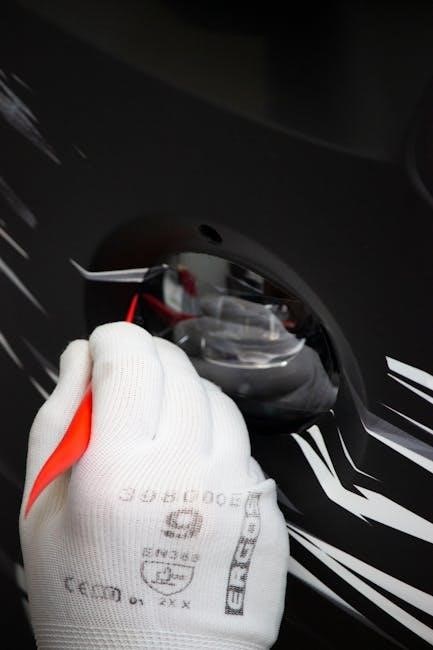
Maintenance and Upkeep
Regularly clean the thermostat’s display and sensors to ensure accurate temperature readings. Update the software via the Resideo Pro app to maintain optimal performance and security.
11.1 Regular Maintenance Tasks
Regular maintenance ensures the TH6320WF2003 thermostat operates efficiently. Clean the display and sensors periodically to prevent dust buildup and ensure accurate temperature readings. Check wiring connections for damage or corrosion and replace any worn-out wires. Update the thermostat’s software via the Resideo Pro app to access the latest features and security patches. Additionally, inspect the UWP mounting system for proper alignment and tighten any loose screws. Schedule annual professional checks for the HVAC system to maintain optimal performance. Replace batteries if applicable, and ensure the C-wire is functioning correctly for consistent power supply.
11.2 Updating Software
Regular software updates are essential for maintaining the TH6320WF2003 thermostat’s performance and security. Use the Resideo Pro app to check for updates and install the latest version. Ensure a stable Wi-Fi connection during the update process to prevent interruptions. The thermostat will restart automatically after the update. Updates may include new features, bug fixes, or improved compatibility. Always follow the on-screen instructions carefully. If issues arise, refer to the user manual or contact Honeywell support for assistance. Keeping the software up-to-date ensures optimal functionality and integration with smart home systems.
Successful installation and setup of the TH6320WF2003 thermostat enables smart temperature control, energy efficiency, and seamless integration with smart home systems for enhanced comfort and convenience.
12.1 Summary of Key Points
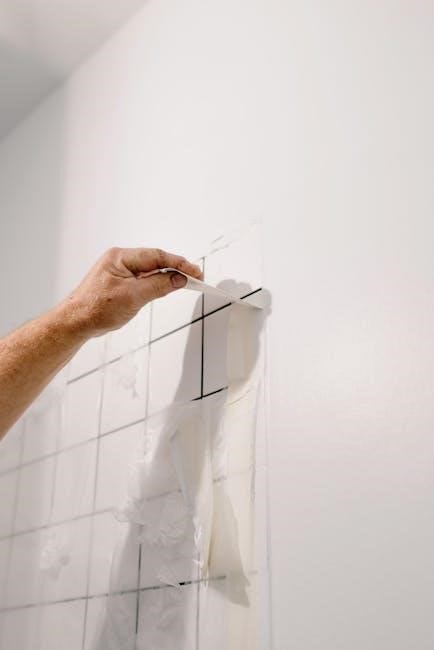
The Honeywell Home TH6320WF2003 thermostat offers advanced features like geofencing, smart home integration, and energy-efficient scheduling. It supports up to 3H/2C for heat pumps and 2H/2C for conventional systems. Proper installation requires a C-wire, with an adapter available for systems lacking one. The UWP mounting system ensures a secure setup, and the package includes the thermostat, mounting hardware, and decorative cover. Following the manual ensures optimal performance, energy savings, and seamless smart home connectivity, making it a reliable choice for modern HVAC control.
12.2 Final Tips for Optimal Performance
Regularly update the thermostat’s software to access the latest features and improvements. Ensure proper wiring connections, especially for auxiliary heat and ventilation settings. Use geofencing to optimize energy usage based on your location. Schedule maintenance tasks like cleaning the thermostat and checking system compatibility. Utilize smart home integrations for enhanced convenience. Always refer to the manual for specific configurations, and consider professional installation for complex setups. These steps will ensure your Honeywell Home TH6320WF2003 operates efficiently, providing consistent comfort and energy savings.
